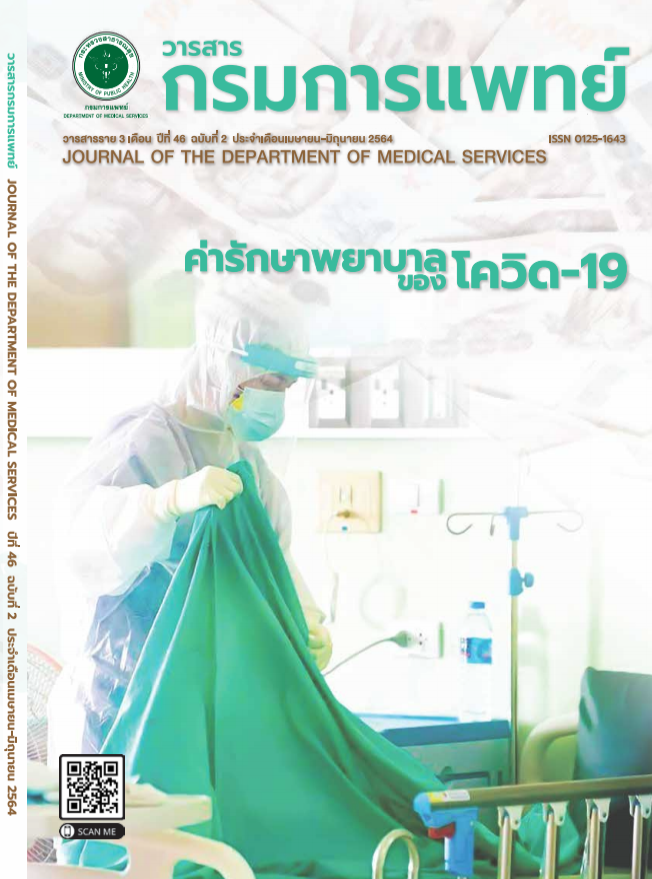Effect of Different dose of Botulinum Toxin Injection for Lower Limb Spasticity in Cerebral Palsy Children: A Systematic Review
Abstract
Background: Cerebral palsy is a common disease in pediatric patients. Most patients have spasticity, which leads to problems with movement, standing, walking, and contracture of tendons and joints. There are several treatment choices such as stretching exercise, orthotic device, oral medication, injections and orthopedic surgery. However, the treatment effect of Botulinum toxin injection depends on many factors, for instance, the patient condition, dosage and injection method.Objective: This study aimed to review the effect of Botilinum toxin dosage in children with cerebral dosage palsy with systematic review.Methods: Searching through electronic databases. Based on a search strategy from the MEDLINE database through PubMed, educational materials were limited to Englishlanguage studies. Randomized controlled trial study: A randomized controlled trial of botulinum toxin in children with cerebral palsy with systematic review. Data collection and analysis, the risk of bias were assessed by three researchers independently, use unanimous resolution to evaluate and select the study. If there was a conflict, a joint consideration was needed to conclude.Results: The total number of studies was 40 studies. The excluded number was 36 studies. These were not related to the effect of the dosage of botulinum toxin and the measurement of non-related cerebral palsy. Remain all the results four included studies. The subjects were patients with cerebral palsy who had treated spasticity in the affected leg with botulinum toxin in different doses. The outcome measurements of the included studies were various. Patients who received higher dose had better improvement. The adverse effects were not significantly different.Conclusion: This systematic review revealed a small number of studies. To clinically useful, a comparative study should be conducted in the cerebral palsy children with other conditions, or other types of study might be included.
References
Lang TC, Fuentes-Afflick E, Gilbert WM, Newman TB, Xing G, Wu YW. Cerebral palsy among Asian ethnic subgroups. Pediatrics 2012; 129: e992–8.
Ngamthanawat P, Chavasiri S. Epidemiology of Pediatric Patients at Department of Rehabilitation Medicine, Siriraj Hospital. J Thai Rehabil Med 2016; 26: 31-8.
Francesco S. Conversion Ratio between Botox®, Dysport®, and Xeomin® in Clinical Practice. Toxins (Basel). 2016; 8: 65. doi: 10.3390/toxins8030065.
Ade-Hall RA, Moore AP. Botulinum toxin type A in the treatment of lower limb spasticity in cerebral palsy. Cochrane Database Syst Rev2000; (2):CD001408. doi: 10.1002/14651858.CD001408.
Koog YH, Min BI. Effects of botulinum toxin A on calf muscles in children with cerebral palsy: a systematic review. Clin Rehabil. 2010;24(8):685–700. doi: 10.1177/0269215510367557.
Delgado MR, Tilton A, Russman B, Benavides O, Bonikowski M,Carranza J, et al. AbobotulinumtoxinA for Equinus Foot Deformity in Cerebral Palsy: A Randomized Controlled Trial. Pediatrics 2016;137:e20152830.
Polak F, Morton R, Ward C, Wallace WA, Doderlein L, Siebel A. Double-blind comparison study of two doses of botulinum toxin A injected into calf muscles in children with hemiplegic cerebral palsy. Dev Med Child Neurol 2002; 44:551-5.
Baker R, Jasinski M, Maciag-Tymecka I, J Mrozek JM, Bonikowski M, Carr L, et al. Botulinum toxin treatment of spasticity in diplegic cerebral palsy: a randomized, double-blind, placebo-controlled,dose-ranging study. Dev Med Child Neurol 2002;44:666-75.
Wissel J, Heinen F, Schenkel A, Doll B, Ebersbach G, Muller J, et al. Botulinum toxin A in the management of spastic gait disorders in children and young adults with cerebral palsy: a randomized,double-blind study of “high-dose” versus “low-dose” treatment.Neuropediatrics 1999; 30:120-4.
Willis AW, Crowner B, Brunstrom JE, Kissel A, Racette BA. High dose botulinum toxin A for the treatment of lower extremity hypertonicity in children with cerebral palsy. Dev Med Child Neurol 2007;49:818-22.
Koman LA, Mooney JF 3rd, Smith BP, Walker F, Leon JM. Botulinum toxin type A neuromuscular blockade in the treatment of lower extremity spasticity in cerebral palsy: a randomized, double-blind,placebo-controlled trial. J Pediatr Orthop 2000;20:108–15.
Corry IS, Cosgrove AP, Duffy CM, McNeill S, Taylor TC, Graham HK. Botulinum toxin A compared with stretching casts in the treatment of spastic equinus: a randomised prospective trial. J Pediatr Orthop 1998;18:304–11.
Sutherland DH, Kaufman KR, Wyatt MP, Chambers HG, Mubarak SJ. Double-blind study of botulinum A toxin injections into the gastrocnemius muscle in patients with cerebral palsy. Gait Posture 1999;10:1–9.
Downloads
Published
How to Cite
Issue
Section
License

This work is licensed under a Creative Commons Attribution-NonCommercial-NoDerivatives 4.0 International License.
บทความที่ได้รับการตีพิมพ์เป็นลิขสิทธิ์ของกรมการแพทย์ กระทรวงสาธารณสุข
ข้อความและข้อคิดเห็นต่างๆ เป็นของผู้เขียนบทความ ไม่ใช่ความเห็นของกองบรรณาธิการหรือของวารสารกรมการแพทย์



